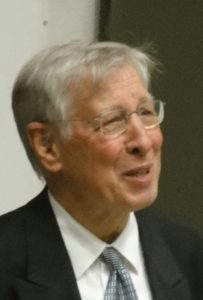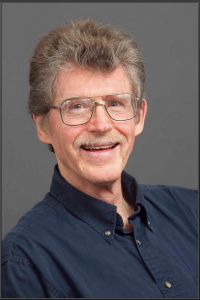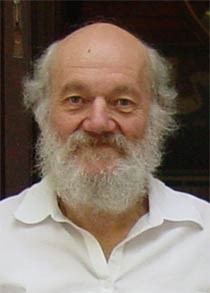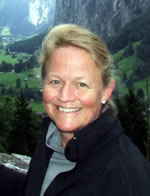ASPS Corresponding Membership
Corresponding Membership of the Australian Society of Plant Scientists recognises overseas colleagues, with a high profile of research achievement in any field of plant science, who have a strong track record of successfully contributing to and promoting plant science research within Australia.
Nominations for ASPS Corresponding Membership can be made at anytime to the Honorary Secretary. A one-page summary addressing the above criteria together with a curricula vitae of the applicant must accompany the nomination. The Council Executive is charged with the responsibility of making a determination on submitted nominations and may seek peer advice. Corresponding Membership is for five years.
-
Professor Steve Long
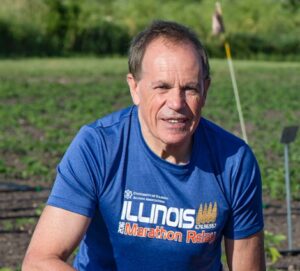 University of Illinois
University of Illinoisslong@illinois.edu View website
Corresponding member since 2024
Steve Long holds the Ikenberry University Chair of Plant Biology and Crop Sciences at the University of Illinois. He is a Fellow of the Royal Society and a Member of the US National Academy of Sciences. His photosynthesis research spans from carbon metabolism to field crops; with a focus on bioengineering sustainable yield increases under global change. Early in his career, inspired by the pioneering work of Australian plant scientists on C4 photosynthesis and its implications for productivity, he identified C4 species that were successful in cold climates. This included the identification of Miscanthus x giganteus as a highly productive cold tolerant C4 species and understanding of how these species evaded the damage to the photosynthetic apparatus that sugarcane, maize and sorghum suffered under chilling conditions. His current research includes bioengineering approaches to improving tolerance in these crops. He also identified the highest net primary productivity known of any natural terrestrial system in C4 Echinochloa polystachya a grass on the Amazon floodplain. He led the development of Free-Air CO2 Enrichment experiments to understand the impacts of rising CO2 on maize and soybean crops under open-air field conditions, and how photosynthesis may be modified to ameliorate climate change impacts. Last year his team’s in silico and subsequent in vivo engineering of photosynthesis led to a more than 25% increase in soybean yields in replicated field trials. Steve is passionate about major opportunities to increase the efficiency of photosynthesis to allow sustainable crop yield increases under climate change as outlined in his recent TEDtalk. He is Founding and Chief Editor of the journals Global Change Biology, Global Change Biology-Bioenergy, and in silico Plants. He has given briefings on global food security and on bioenergy to President at the White House, to the Vatican, and to Bill Gates.
-
Professor Mary Williams
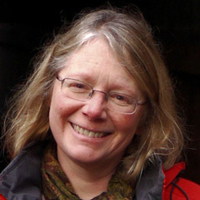 American Society of Plant Biologists
American Society of Plant Biologists mwilliams@aspb.org View website
Corresponding member since 2020
Mary Williams studied Biochemistry as an undergraduate at the University of California, Berkeley, and then completed a PhD in Plant Molecular Biology at the Rockefeller University in the lab of Nam-Hai Chua. Following a postdoc with Ian Sussex back in Berkeley, she took a faculty position at Harvey Mudd College, a liberal arts college of science and engineering, in Claremont, California, where she rose to the rank of Full Professor.
During a sabbatical with Mike Blatt in Glasgow, she married a Scot and decided to follow a new career path. The American Society of Plant Biologists offered her the opportunity to develop Teaching Tools in Plant Biology (a feature of The Plant Cell). These peer-reviewed online resources were developed to support educators around the world without restriction.
Mary is interested in how we can leverage the powerful space we call the internet to promote plant sciences to all, and to encourage researchers to find their voice in science communication. Since 2015 she has contributed to the development of several ASPB-led initiatives designed to support the development of early-career researchers. These include the Plantae Fellows program, the ASPB Scholars program, and Plant Physiology’s Assistant Features Editor program. You can most often find her on Twitter @PlantTeaching.
-
Professor Mark Stitt
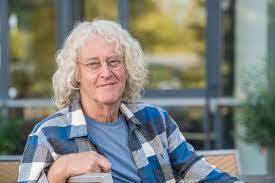 Max Planck Institute of Molecular Plant Physiology
Max Planck Institute of Molecular Plant PhysiologyMStitt@mpimp-golm.mpg.de View website
Corresponding member since 2019
-
Professor John Lunn
Max Planck Institute of Molecular Plant Physiology
lunn@mpimp-golm.mpg.de View website
Corresponding member since 2020
-
Professor Missy Holbrook
-
Professor Olle Bjorkman
Retired: ex Carnegie Institute of Washington, Stanford, California, USA
Corresponding member since 2015
-
Professor Hans J Bohnert
University of Illinois, Urbana-Champaign, Illinois, USA
bohnerth@life.uiuc.edu View website
Corresponding member pre 2015
With an interest in biochemical and physiological concepts, in animal systems during my thesis and then in plants as a postdoctoral fellow, I wished to interpret established physiological knowledge in molecular terms. This included work on chloroplast gene structure and dynamics of gene expression, plastid protein transport and biochemistry, and chloroplast genome evolution. At the University of Arizona work began that analyzed abiotic stress responses of plants, attempts to define downstream biochemical events that protected plants against salinity or water deficit. Stress elicits complex multigenic responses and, thus, embracing the genomics-type concepts was a logical next step. Now, at the University of Illinois (Urbana-Champaign), the focus is on stress response pathways that distinguish breeding lines, ecotypes and closely related species and attempts to understand the evolution of paralogous genes for ubiquitous functions. The work culminated in elucidating the genome of a salt-tolerant cousin of Arabidopsis (Thellungiella parvula). The outstanding feature of this genome is the duplication of genes that support salt tolerance in contrast to Arabidopsis in addition to single amino acid alterations that increase salt tolerance. Now retired, I life in Tucson, Arizona.
-
Professor Maarten J Chrispeels
University of California San Diego, La Jolla, California, USA
mchrispeels@ucsd.edu View website
Corresponding member pre 2015
-
Associate Professor Asaph Cousins
Washington State University, Pullman, WA, USA
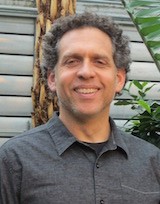 Corresponding member since 2015
Corresponding member since 2015The ability to monitor and predict how plants both influence and are influenced by future climatic conditions is critical for the health of our planet and for future food production. My research couples molecular biology techniques with plant physiology and mathematical modeling of photosynthesis to understand the mechanistic processes dictating plant-environment interactions. This research uses a variety of experimental techniques, including field experiments, leaf and whole plant gas exchange, recombinant DNA techniques, biochemistry, and metabolite analysis to elucidate how the interactions of plant light utilization, carbon and nutrient assimilation, and isotope discrimination are influenced by changing environmental conditions.
-
Professor Howard Griffiths
-
Professor Dr Rainer Hedrich
Chair of Molecular Plant Physiology and Biophysics, Julius-Maximilians-University Wuerzburg, Germany
hedrich@botanik.uni-wuerzburg.de View website
Corresponding member since 2021
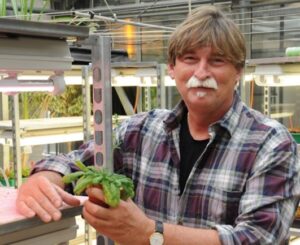
Professor Dr. Rainer Hedrich studied biology at Georg-August-Universität Göttingen, where he earned his PhD degree in 1985. Following his postdoctoral period at the Max Planck Institute for Biophysical Chemistry, Göttingen. In 1991, he received a Heisenberg fellowship and was appointed Chair of Biophysics at the University of Hannover. Since 1996, he has been chair holder of Molecular Plant Physiology and Biophysics at Julius-von-Sachs-Institute of Julius-Maximilians-University Wuerzburg.
Hedrich is one of the most frequently cited scientists in the field of plant research (since 2008 highly cited researcher, Clarivate Analytics), particularly based on his research on signal transduction mechanisms through ion channels. Over the course of his career, he has received numerous awards. Since 2005, Hedrich has been a member of the German National Academy of Sciences ‘Leopoldina’. In 2010, Hedrich’s work on carnivorous plants was recognised by the European Research Council (ERC). His studies showing the “Venus flytrap plants count five” made it a “Nature Highlight” and into media worldwide.
Rainer Hedrich is a leading international researcher in several fields of work. On the one hand, the molecular mechanisms controlling stomatal guard cells of higher plants are within the focus of his research. On the other hand, he explores the evolutionary success of the carnivorous Venus flytrap Dionaea muscipula. The first experimental proof for the existence of ion channels in plants, already during his PhD studies, represented a scientific breakthrough which had a decisive influence on plant physiology. Subsequently, he discovered the guard cell anion channels and gained first important insights into their complex control by voltage, nucleotides, hormones and metabolites. Having discovered the mechanosensitive channels in the guard cell plasma membrane, Hedrich successfully cloned the key plant specific ion channels and carriers and characterised them through heterologous expression.In particular, these studies deciphered the molecular structure, function, and hormonal regulation of novel plant potassium and anion channels. These investigations using knock-out mutants provided new insights into the functional mechanisms of stomatal guard cells and plant water-use efficiency in particular, and the biology of plant ion channel networks in general.
In his first publication originating from the ERC project launched in 2010, Hedrich presented groundbreaking insights into the molecular biology of plant carnivory. He was able to show that the mechano-stimulated insect catching process of the Venus flytrap is modulated by the phytohormones abscisic acid and jasmonate in an antagonistic manner.
With his published since 2012, Hedrich has reached a new milestone in the understanding of carnivorous plants. After investigating their touch sensory trigger hairs, electrical excitability, movement, and endocrinology, Hedrich presented spectacular results that largely explain the mechanisms of the flytrap. Interestingly, the Venus flytrap counts the fired action potentials to make decisions during capture and enzymatic digestion of the animal struggling to escape (enzyme release according to the size of the prey).
The most recently the Hedrich lab designed and expressed in plants algal and microbial light-gated ChannelRhodopsin CHR-type ion channels. In non-invasive optogenetics experiments short light pulses are used to remote control the membrane potential, pH, and cytoplasmic calcium concentration of cells and decompose so far hidden steps in plant signaling processes.
In Rainer Hedrich’s lab, plant ion channels advanced from a biophysical concept to a major signaling platform in sensory biology mentioned in international textbooks.
-
Professor Hans W Heldt
Univ Goettingen, Untere Karspuele, Goettingen, Germany
Corresponding member since 2015
Hans Heldt graduated with a PhD in Chemistry from the University of Marburg, Germany in 1962. From 1962 until 1968, he held the position of Scientific Assistant at the Institute for Physiological Chemistry, University of Marburg, and then moved to the University of Munich in 1968 as a Senior Researcher at the Institute for Physiological Chemistry and Physical Biochemistry, where he became Professor in 1976. From 1978 to 2002, he was Professor of Biochemistry and the Director of the Department for Plant Biochemistry, in the Biological Faculty of the University of Göttingen. He also served as a representative of the prestigious Union of German Academies of Science on the InterAcademic Panel from 2000 until 2006. Professor Heldt’s research interests focused on the transport of metabolites across cellular and subcellular membranes of plants, the metabolism of photosynthetic pathways, and the use of gene technology to answer questions in these areas. He is the author of Plant Biochemistry, which is now in its fifth edition in German, and has been translated into English, Japanese, Chinese, Russian and Spanish. His work has been recognised by a number of awards, including the Max Planck Research Prize, sponsored by the Alexander von Humboldt Foundation and Max.Planck Society, in 1993.
-
Professor Russell L Jones
University of California Berkeley, Berkeley, California, USA
russelljones@berkeley.edu View website
Corresponding member pre 2015
-
Professor William J Lucas
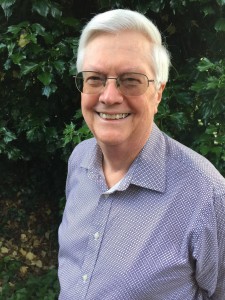
University of California Davis, Davis, California, USA
wjlucas@ucdavis.edu View website
Corresponding member pre 2015
The Lucas laboratory has worked on a number of topics, including membrane transport and mineral nutrition, phloem biology, virus movement and plasmodesmal biology. These studies laid the foundation for the concept that plasmodesmata evolved to mediate cell-to-cell exchange of metabolites and non-cell-autonomously acting proteins (NCAPs) and micro/small RNA species. Presently, the main research focus is on the role of plasmodesmata and the phloem as local and long-distance pathways for the trafficking of information macromolecules. In addition, biochemical and molecular approaches are being used to isolate and characterize proteins that are components of the plasmodesmal supramolecular complex. The molecular determinant underlying protein targeting to and translocation through plasmodesmata are also being studied using genetic and molecular approaches. The long-term goal is to better understand the mechanisms used by plants to coordinate physiological and developmental processes at the whole-plant level.
-
Professor Cathie Martin
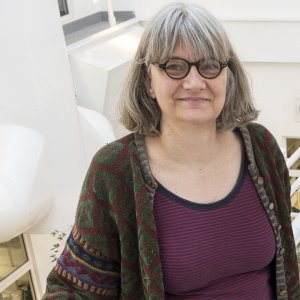
John Innes Centre,UK
Cathie.Martin@jic.ac.uk View website
Corresponding member since 2018
Cathie’s research interests lie in using plant science to improve human diet and health.
She is particularly interested in biofortification and using plant metabolic engineering to enhance foods nutritionally.
Much of Cathie’s work has been undertaken in tomatoes, enriching their nutrient content with, for example, resveratrol and anthocyanin.
Cathie collaborates to test these enhanced foods in intervention studies and also undertakes studies into how these modified fruits have improved shelf-life and reduced susceptibility to grey mould, Botrytis cinerea.
- Biofortification of fruit and vegetables for human health
- Metabolic engineering to enhance phytonutrients such as anthocyanins and resveratrol
- Improving the shelf-life of fruit and vegetables
Cathie and her group have recently been co-ordinating research into the relationship between diet and health, and how crops can be fortified to improve diets and address the global challenge of escalating chronic disease. This work has involved linking leading clinical and epidemiological researchers with plant breeders and metabolic engineers to develop scientific understanding of how diet can help to maintain health, lead to healthy ageing and reduce the risk of chronic disease.
This has included research into plants which contain natural chemical compounds, some of which are seen as ‘natural medicines.’ Cathie is particularly interested in phenolic compounds present in fruit and vegetables which are considered to be the main ‘active ingredients’ of many ‘super foods’ and ‘super drinks’.
Cathie’s fundamental research has also focused on cellular specialisation and she was the first to identify genes regulating cell shaping in plants. She is currently investigating how specially shaped cells adapt plants to their environment.
Cathie is also interested in cellular specialisation in flowers (colour and cell shape) and how these traits are used by different plants for pollinator attraction.
-
Professor Yoshio Masuda
Osaka City University, Sumiyoshi-ku Osaka, Japan
Corresponding member pre 2015
-
Professor Peter H Quail
USDA University of California, Berkley, Albany, California, USA
quail@berkeley.edu View website
Peter Quail grew up on a sheep farm in Cooma, NSW, and became interested in the roles of environmental signals in plant development as an undergraduate at the University of Sydney. After completing his Ph.D. at the University of Sydney in 1968, he spent sequential postdoctoral periods at the Plant
Research Laboratory (PRL), Michigan State University (1968-71), the Biologishes Institut, University of Freiburg, Germany (1971-73), the Research School of Biological Sciences (RSBS), ANU, Canberra (1973-77) and the Carnegie Institution, Stanford, California (1977-79). These were followed by faculty positions in Botany and Genetics, at the University of Wisconsin, Madison, WI (1979-87), and the University of California, Berkeley (1987-present), where he is a Professor of Plant Biology, and Research Director at the ARS(USDA)/UCB Plant Gene Expression Center (PGEC), Albany, California. He is a recipient of the American Society of Photobiologists Research Award, the LI-COR Award for Distinguished Contributions to Photochemistry/Photobiology, a Corresponding Member of the Australian Society of Plant Physiologists, recipient of an ISI award for top 15 most highly cited authors in the Plant & Animal Science discipline, Fellow of the American Association for the Advancement of Science, recipient of the Stephen Hales Award from the American Society of Plant Biologists and a Member of the U.S. National Academy of Sciences. His research is focused on defining the molecular mechanism by which the phytochrome (phy) family of plant sensory photoreceptors controls gene expression, and thereby plant growth and development, in response to informational light-signals from the environment. His laboratory has provided evidence that the signaling mechanism involves rapid, direct, intranuclear interaction of the light-activated photoreceptor molecule with a sub-family of basic helix-loop-helix (bHLH) transcription factors (called PIFs), with resultant induction of phosphorylation of the PIF proteins, as a prelude to degradation of the bHLH factors and consequent gene-expression changes.
-
Professor Christine Raines
University of Essex, Colchester, UK
rainc@essex.ac.uk
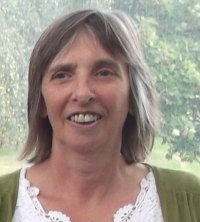 View website
View websiteCorresponding member since 2015
Christine Raines graduated with a B.Sc. (Hons) Agricultural Botany, First Class from Glasgow University in 1982. Following which she was awarded a Glasgow University Scholarship and studied for a Ph.D. in Photosynthesis graduating in1986. Christine’s post doctoral research started in late 1985 at the Institute of Plant Science Research, Cambridge where she initiated a project cloning nuclear genes encoding enzymes of the C3 cycle. In 1988 Christine was appointed to a faculty position at the University of Essex being promoted to Professor in 2004. Christine is currently Head of the School of Biological Sciences at Essex.
Christine also holds a number of external roles; Editor in Chief, Journal of Experimental Botany (2011- ), Co-Opted Member of UK Plant Federation Executive (2012- ). Past roles include Associate Editor, Journal of Experimental Botany (2006- 2011), Chair of Plant Section, Society of Experimental Biology (2009- ), BBSRC Biofuels Committee (2007/8), EPSRC Bioenergy Committee (2008), Nuffield Bioethics Committee on Biofuels (2009-2011).
Christine’s research interests are in the area of plant molecular physiology including the isolation and characterisation of photosynthetic genes, analysis of gene expression and production and analysis of transgenic plants. A major focus of the work in the Raines’ lab currently is on improvement of photosynthetic carbon assimilation in transgenic plants to increase plant yield. Christine has authored or co-authored approx 70 peer-reviewed research papers and 6 reviews or book chapters.
-
Professor John Raven
University of Dundee, Dundee, UK
j.a.raven@dundee.ac.uk View website
John Raven has researched into plants and algae since 1963, first in Cambridge and from 1971 in Dundee. He formally retired in 2008 and is now an Emeritus Professor at the University of Dundee and an Honorary Research Fellow at the James Hutton Institute, Dundee, He is still in science, with frequent research visits to Australia since and past and/or present collaborations with Australia-based scientists in UQ, UTS, Monash University, UTas, ANU, University of Adelaide and UWA. John is an Adjunct Professor at UWA and a Visiting Professor at UTS. His work encompasses acid-base regulation, including the movement of weak electrolytes such as IAA and ABA, and the mechanisms of acquisition and assimilation of photosynthetically active radiation, carbon, nitrogen, phosphorus and iron and the effectiveness of use of these resource in plants and, especially, algae. John also has interests in palaeoecophysiology and astrobiology. He is a fellow of the Royal Societies of Edinburgh and of London and of the Royal Society of Biology, and has an Honorary PhD from the University of Umeå. He holds an Award of Excellence from the Phycological Society of America, and was recognised as a Highly Cited Scientist by ISI in 2002. John (with Paul Falkowski) received the Prescott Prize of the Phycological Society of America, is an Honorary Life Member of the British Phycological Society, a Fellow of the Botanical Society of Scotland, a Fellow of the Marine Biological Association and a Corresponding Member of the Botanical Society of America.
-
Professor Rowan Sage
University of Toronto, Toronto, ON, Canada
r.sage@utoronto.ca View website
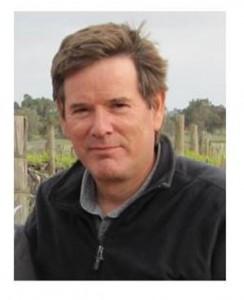 Corresponding member pre 2015
Corresponding member pre 2015Rowan Sage is a Professor of Plant Biology in the Ecology and Evolution Department at the University of Toronto. His research addresses physiological mechanisms governing photosynthetic responses to CO2 and temperature, and the ecophysiology C4 plant evolution. He is noted for identifying the number of independent origins of C4 photosynthesis, and for his work on the driving mechanisms of C4 evolution. His lab is currently identifying new intermediate species of C4 evolution in order to better understand how the C4 pathway evolved. He serves as a handling editor for Global Change Biology, Oecologia and Plant and Cell Physiology, and edited numerous major works on C4 plants, including the highly cited 1999 volume C4 Plant Biology.
-
Associate Professor Tammy Sage
-
Professor Keiko Torii
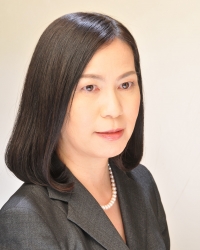
The University of Texas at Austin, USA
ktorii@utexas.edu View website
Corresponding member since 2018
-
Professor Rens Voesenek
UTRECHT, NETHERLANDS
l.a.c.j.voesenek@bio.uu.nl View website
 Corresponding member pre 2015
Corresponding member pre 2015My scientific career started in the department of Experimental Plant Ecology at the Radboud University Nijmegen (the Netherlands). My PhD research had its fundamentals in Ecology and aimed to improve insight into the distribution patterns of Rumex species in flood-exposed river floodplains. Gradually this work focused on the physiological mechanisms that enable plants to cope with complete submergence. Ethylene-induced petiole elongation turned out to be an important trait to survive prolonged flooding events. In 1999 I accepted a full professor position in Plant Ecophysiology at Utrecht University. Here I continued the physiological work and extended it with research questions related to the molecular regulation of under water elongation. Next to Rumex also Arabidopsis thaliana was included as a model species in many research projects. Furthermore, the observation that low light levels stimulate shoot elongation, in a way very similar to submergence, resulted in more research on the impact of low light levels on plant growth. So far this work resulted in more than 170 publications. Ultimately, I hope our work contributes to a better understanding of the fundamental mechanisms through which higher plants acclimate to environmental signals. This will play a role in the selection and breeding of crop species that are more tolerant to environmental stress.

